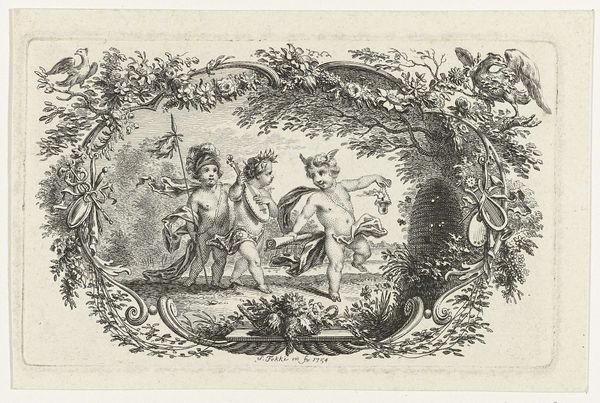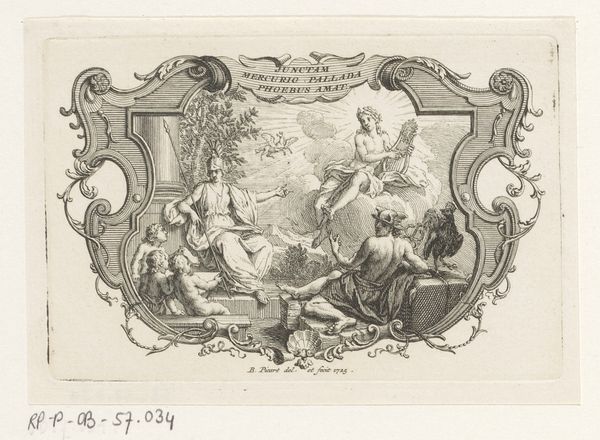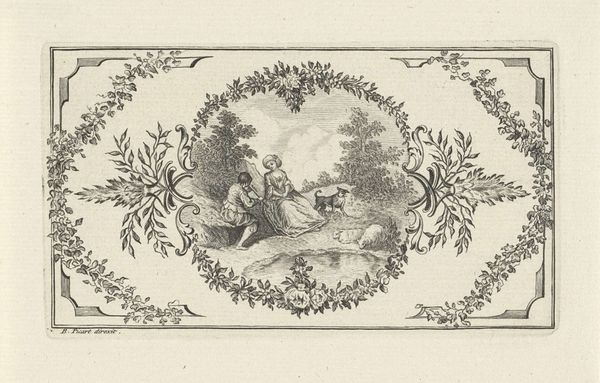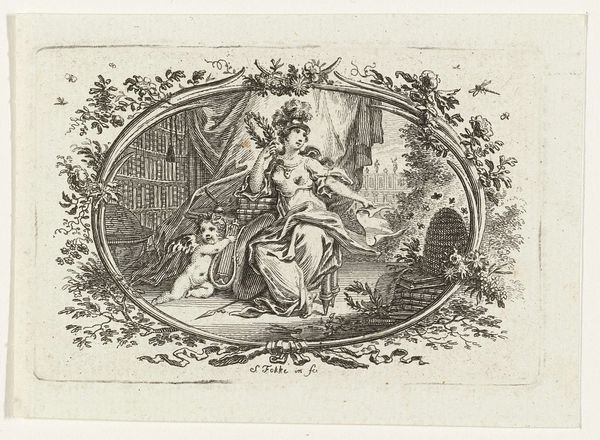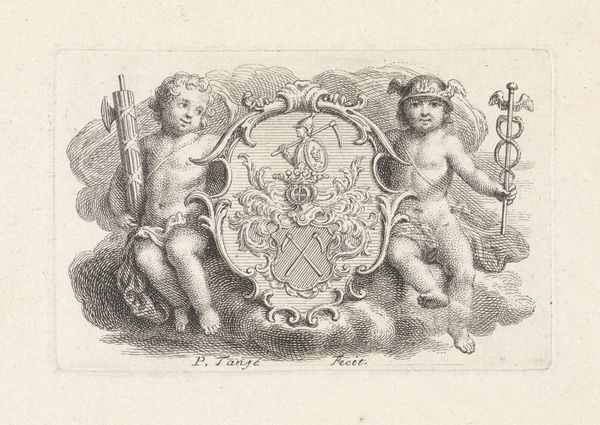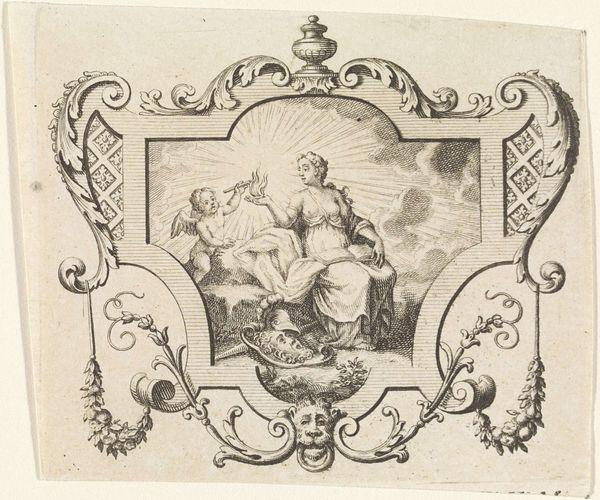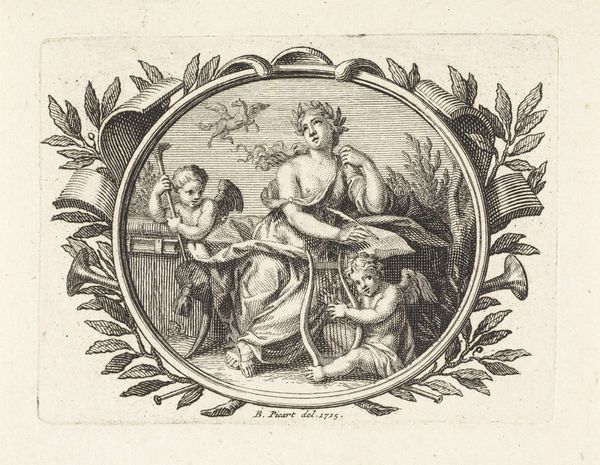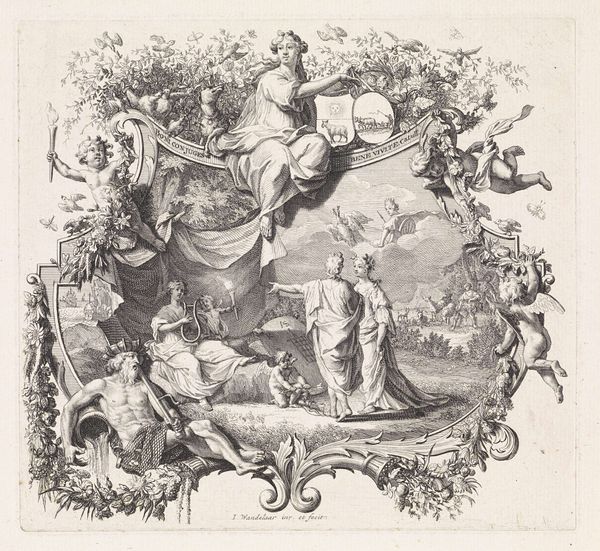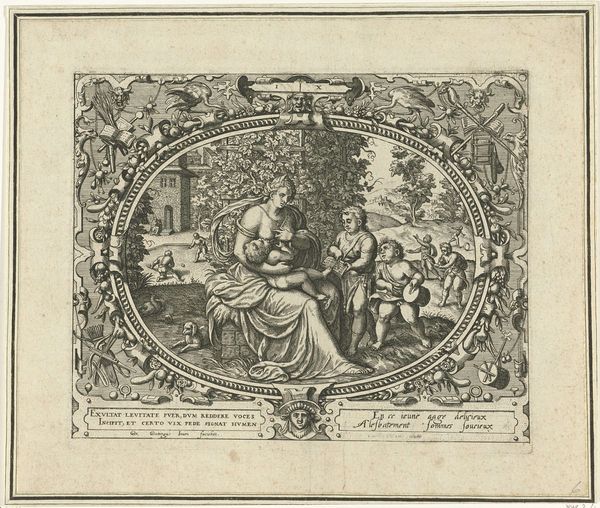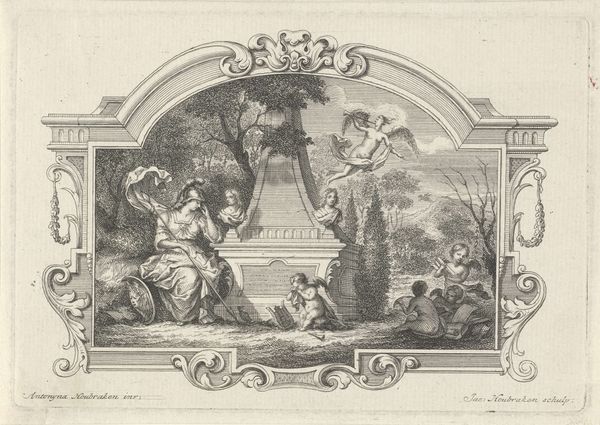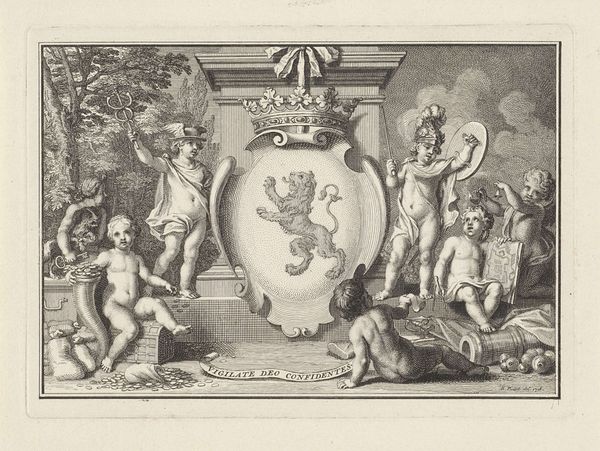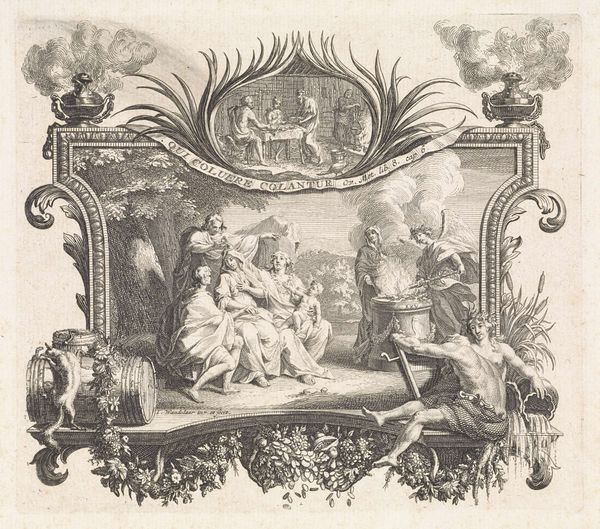
Dimensions: height 66 mm, width 87 mm
Copyright: Rijks Museum: Open Domain
Curator: Look at this charming engraving, “Twee putti met buste van Pan en bijenkorf in cartouche,” or "Two Putti with a Bust of Pan and Beehive in Cartouche" by Abraham Delfos, likely created between 1741 and 1820. What strikes you? Editor: The elaborate ornamentation immediately grabs attention, doesn’t it? The fine linework gives a sense of delicacy, but there is also a surprising level of busyness to the composition with all the swirling details in such a contained format. Curator: Precisely! That “busyness,” I would argue, isn't merely decorative. It's indicative of the period’s fascination with allegory. The putti, the bust of Pan—a symbol of nature and fertility—and the beehive all suggest layered meanings, perhaps touching on themes of prosperity, abundance, and the rewards of labor. Editor: I can see that. But the symmetry here also points to a deeper conceptual framework, doesn't it? Note how the artist uses balanced shapes, rhythmic lines, and alternating textures to bring focus to the central bust of Pan. The flanking putti operate almost as visual echoes. Curator: Indeed. Consider, though, the societal context. These idealized figures were not merely aesthetic choices but reflections of the era's class structure, notions of beauty, and ideas about innocence. The artwork, intended as a miniature print, served a purpose for circulating ideas among an elite class of patrons. Editor: The contrast between the meticulously rendered details and the almost careless background shading is really striking as well, particularly as it sets off the idealized cartouche elements in the front. I find myself wanting to know why the artist prioritized some aspects over others. Curator: An excellent point. Delfos invites the viewer to partake in the visual codes emblematic of the era’s beliefs. And through their accessibility as prints, images like this became tools that bolstered social ideologies related to labor and reward. Editor: The image's focus, ultimately, is about achieving balance. Balance within its own visual structure but perhaps a larger argument about nature and progress during the Enlightenment. Curator: A society always in flux! We can, regardless, glean a perspective on their priorities via art like this, even today.
Comments
No comments
Be the first to comment and join the conversation on the ultimate creative platform.
